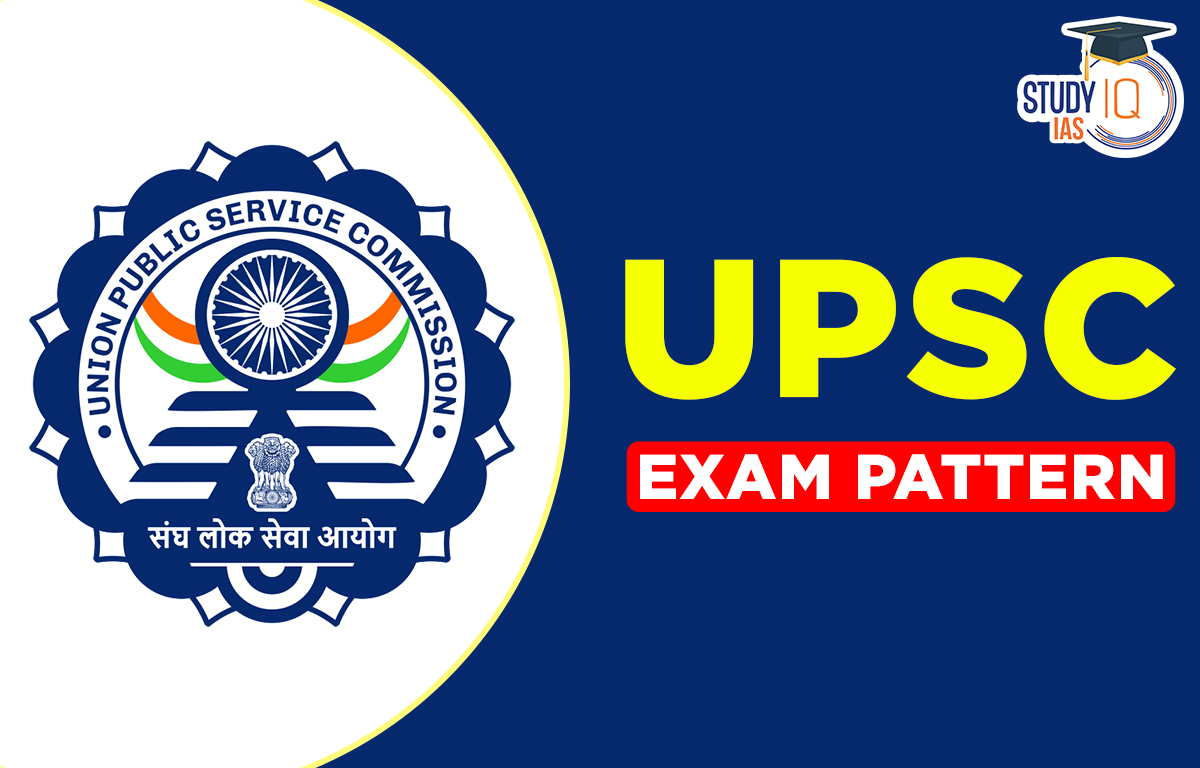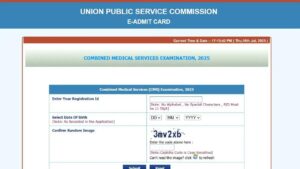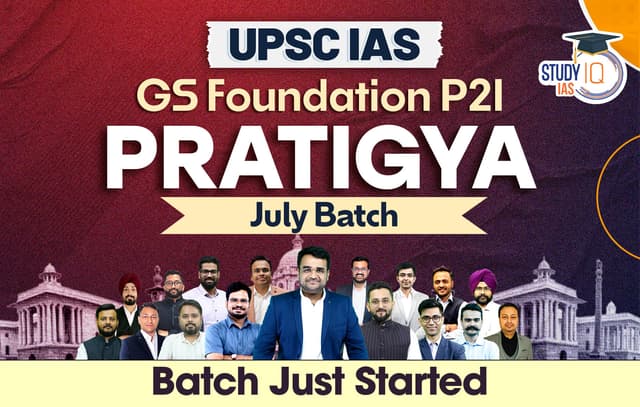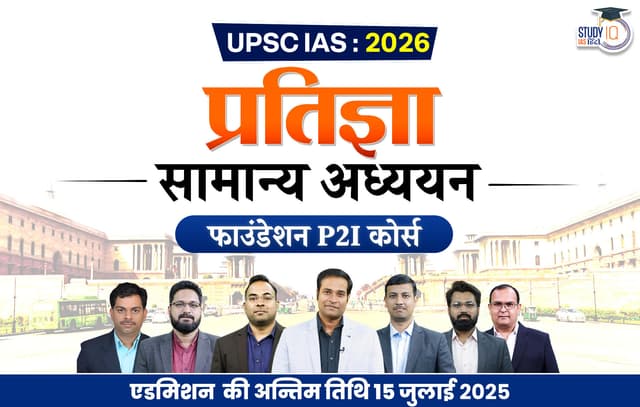Table of Contents
The Union Public Service Commission (UPSC) conducts the Civil Services Examination (CSE) annually to select candidates for prestigious positions in various civil services like IAS, IPS, IFS, and more. The UPSC CSE 2025 is a highly competitive exam, and understanding the UPSC exam pattern is essential for aspirants to devise a successful strategy.
In this article, we will cover the UPSC exam pattern for Prelims, Mains, and the Interview (Personality Test). Let’s dive into the detailed structure of each stage and important details you need to know for your preparation.
UPSC Exam Pattern 2025
Union Public Service Commission has set the UPSC Exam Pattern for the Civil Service Exam. According to the IAS Selection Process, the UPSC Exam Pattern is divided into three stages: Prelims, Mains, and Interview. Each Stage is qualifying in nature and carries a weightage of marks. One has to clear all three stages to become an IAS Officer. The UPSC Exam Pattern assesses candidates’ academic knowledge and ability to organize their responses for the IAS Exam 2025. Because of this, candidates must have a thorough understanding of the IAS Exam Pattern for Prelims and Mains. Candidates may better organize their time and prepare for the exam if they thoroughly know the format. Matching their study plan to the exam requirements will also be more straightforward.
| Stages | Name | No. Of Papers | Type Of Exam | Marks |
| Stage 1 | UPSC Prelims Exam Pattern | 2 Papers (GS 1 & CSAT Papers) | Objective | 400 |
| Stage 2 | UPSC Mains Exam Pattern | 9 Papers | Descriptive | 1750 |
| Stage 3 | IAS Interview | – | Personality Test | 275 |
| Total Marks | UPSC Mains + Interview Marks = 2025 Marks | |||
UPSC Prelims Exam Pattern 2025
UPSC Prelims is the first phase of the UPSC CSE Exam. UPSC Prelims Exam Pattern includes two papers, General Studies-1 and General Studies-2, or CSAT. The prelims exam’s two papers are conducted on the same day. CSAT Paper/GS Paper 2 of the UPSC Prelims is a qualifying paper. To be eligible, applicants must pass the CSAT with a minimum score of 33%. To ensure you pass the exam on your first try, familiarize yourself with the UPSC Prelims Syllabus 2025.
| UPSC Prelims Exam Pattern | ||||
| Prelims Paper | Name of Questions | Marks Allotted | Time Allotted | Nature of Paper |
| GS Paper I | 100 Questions | 200 | 2 hours | Merit Ranking |
| GS Paper II (CSAT) | 80 Questions | 200 | 2 hours | Qualifying |
| Total Marks in Prelims | 400 Marks | |||
UPSC Prelims Negative Marking Rule
According to the UPSC exam pattern for the Prelims, each question on General Studies-1 is for two points, and each question on the CSAT paper is worth five points. In the UPSC, one-third of the marks allotted to such questions would be deducted.
- This indicates that there would be a negative marking of 0.66 for IAS Prelims Paper 1.
- The UPSC negative marking for the CSAT will be 0.83.
| UPSC Prelims Negative Marking Rule | |||
| Paper | Total Questions | Total Marks | Negative Marks |
| General Studies-1 | 100 | 2*100=200 | 0.66 |
| General Studies-2 (CSAT) | 80 | 2.5*80=200 | 0.83 |
Read more: UPSC Calendar 2025
UPSC Mains Exam Pattern 2025
The UPSC Main Exam Pattern consists of nine papers, two of which are qualifying in nature and the remaining seven are merit-determining papers. Those who pass the preliminary exam are qualified to take the main examination. For a better understanding of the subjects included in the main exam, download the UPSC Mains Syllabus 2025. Candidates must sit both qualifying and merit papers in accordance with the UPSC Mains Exam Pattern.
- There will be a total of 9 papers, of which 2 will have qualifying characteristics, 4 will be for General Studies, and 2 will be for the optional courses.
- For the Mains exam, candidates are permitted to select an optional topic.
- All of the articles will also be descriptive.
The following papers will be included in the UPSC Mains 2024 written Examination:
| UPSC Mains Exam Pattern | ||||
| Paper | Subject | Nature Of Paper | Time Allotted | Total marks |
| Paper A | Compulsory Indian language | Qualifying (75 Marks required. ie. 25%) | 3 hours | 300 |
| Paper B | English | 3 hours | 300 | |
| Paper I | Essay | Final Merit (Marks will be counted in the final merit list) | 3 hours | 250 |
| Paper-II | General Studies I | 3 hours | 250 | |
| Paper III | General Studies II | 3 hours | 250 | |
| Paper IV | General Studies III | 3 hours | 250 | |
| Paper V | General Studies IV | 3 hours | 250 | |
| Paper VI | Optional I | 3 hours | 250 | |
| Paper VII | Optional II | 3 hours | 250 | |
| UPSC Mains Total Marks | 1750 | |||
Candidates from Meghalaya, Mizoram, Arunachal Pradesh, Sikkim, Manipur, and Nagaland, as well as those with hearing impairment, are exempt from taking Paper A. These candidates must, however, demonstrate that their university or board has exempted them from taking second or third language courses.
UPSC Mains Marks Distribution
- Papers A and B are qualifying according to the UPSC mains exam pattern, and all other papers are taken into consideration for merit.
- To be taken into consideration for the final merit list, candidates must receive at least a 25% on each paper.
- There are 300 marks on each of Papers A and B.
- The last seven papers each carry a total of 250 points.
The subjects which are covered by the General Studies Papers in Mains Exam are:
| General Studies I | General Studies II | General Studies III | General Studies IV |
| Indian Heritage and Culture | Governance | Technology | Ethics |
| History and Geography of the World | Constitution | Economic Development | Integrity |
| Society | Polity | Bio-diversity | Aptitude |
| Social Justice | Environment | ||
| International relations | Security and Disaster Management |
UPSC Optional Mains Exam Pattern
The main pattern comprises two optional papers, as was already mentioned. According to the UPSC Marking Scheme, each paper carries 250 points. From the list of UPSC Optional Subjects, candidates are free to select any subject they desire. The complete list of electives is provided in the link below. The Optional subjects for Paper VI and VII of the mains examination have to be any one of the subjects from the following list:
| Optional subjects | ||||
| Agriculture | Animal Husbandry and Veterinary Science | Anthropology | Botany | Chemistry |
| Civil Engineering | Commerce and Accountancy | Economics | Electrical Engineering | Geography |
| Geology | History | Law | Management | Mathematics |
| Mechanical Engineering | Medical Science | Philosophy | Physics | Political Science and International Relations |
| Psychology | Public Administration | Sociology | Statistics | Zoology |
| The literature of any one of the following languages: Assamese, Bengali, Bodo, Dogri, Gujarati, Hindi, Kannada, Kashmiri, Konkani, Maithili, Malayalam, Manipuri, Marathi, Nepali, Odia, Punjabi, Sanskrit, Santhali, Sindhi, Tamil, Telugu, Urdu and English. | ||||
UPSC Interview Exam Pattern 2025
After clearing the written examination, the candidate faces a Personality Test in which most questions are based on general interests topics. The purpose of the interview round or personality test is for a Board of knowledgeable and objective UPSC observers to examine if the candidate is suitable for a career in public service.
- According to the UPSC Paper Pattern, there will be a total of 275 points awarded for the interview phase.
- The final merit list will be created based on the candidate’s scores in the Mains and Interview when the UPSC Result of the interview round is announced.


 UPSC CMS Admit Card 2025 Out: Download L...
UPSC CMS Admit Card 2025 Out: Download L...
 UPSC Study Material for Prelims & Ma...
UPSC Study Material for Prelims & Ma...
 NATO Countries List 2025, Members, Funct...
NATO Countries List 2025, Members, Funct...





















